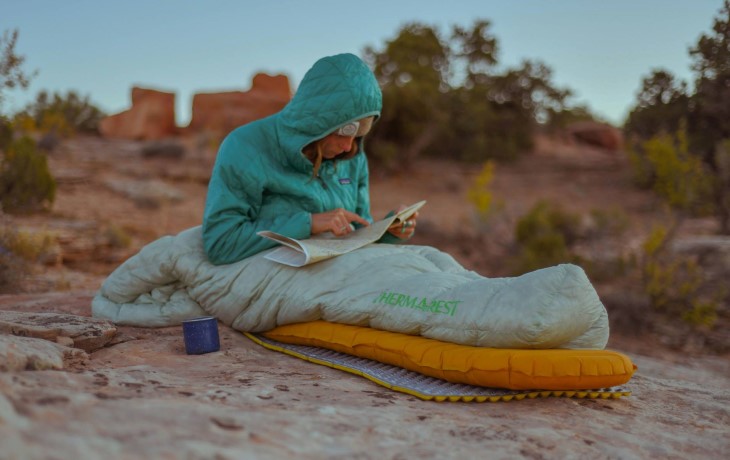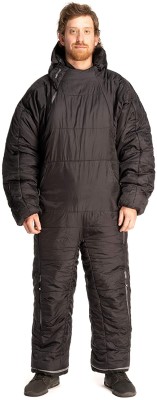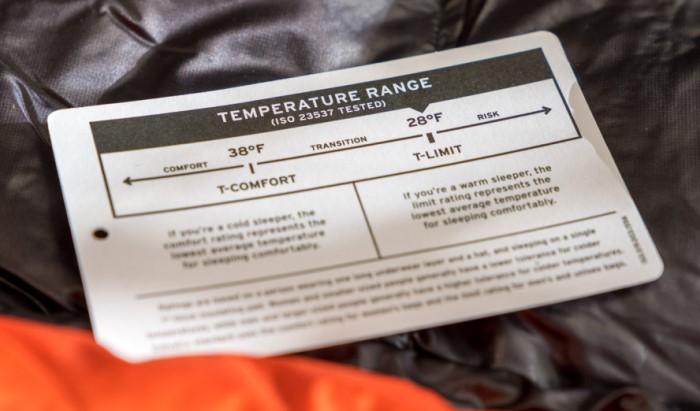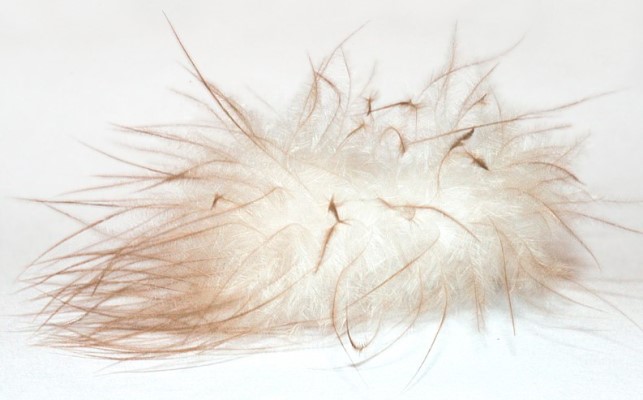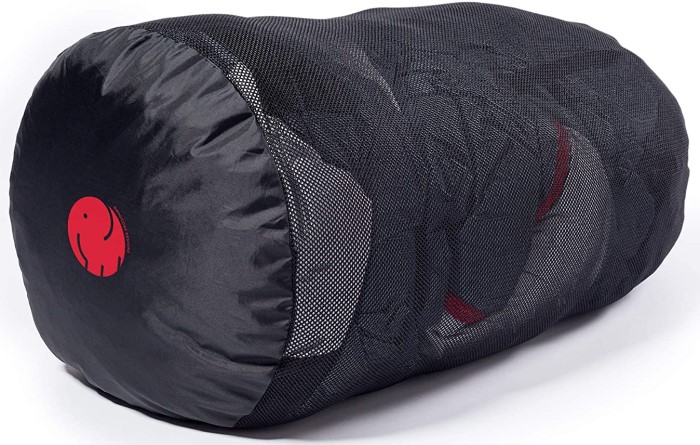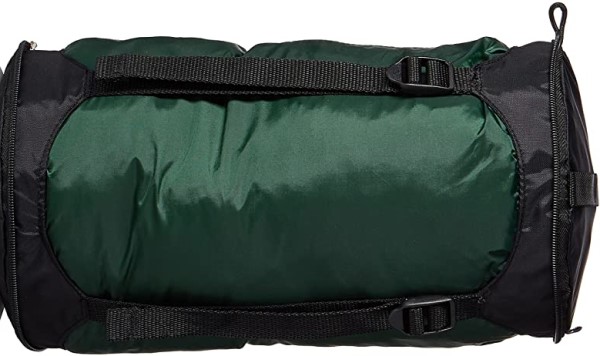Since your go-bag and sleeping bag are kept at home until you bug out, if something happens at home where you need more shelter (eg. losing power in a winter storm), you can grab the sleeping bag from your kit and use it inside.
If you don’t have a legit sleeping bag, you’ll likely end up wearing layers of clothing and improvising a way to trap heat around you, such as a trash bag filled with leaves to act like an insulative ‘blanket’ with a tarp overhead. Those methods work but obviously take more resources and skill.
Sleeping bags can also be useful when trying to warm up someone experiencing hypothermia.
Reviews: Best sleeping pads, bivy sacks, small tents, and tarps
An often-overlooked accessory is the sleeping bag liner. We don’t personally use them in normal life while camping but carry them in go-bags in climates with wide ranges of temperatures. The liner is a mini sack that fits in between you and the larger bag, kind of like a thinner glove inside a beefier winter glove. Adding or removing the liner can adjust the rated temperature by 25 degrees.
If the weather gets too warm, ditch the main bag and just use the thinner liner as your main cover.
Most important bits about sleeping bags for preparedness:
- Bags come in 3-season, summer, or winter varieties. The 3-season is best for most people in American climates because they’re usually rated down to a temp of 15-30°F.
- Add-on sleeping bag liners are often overlooked, but can give you valuable flexibility to deal with a wider range of temperatures, such as making a 3-season bag capable of handling the 4th. They’re also easier to clean, in the same ways socks are easier to clean than shoes.
- Loose bags don’t trap heat as well. It’s nice to bring in a few things, such as a water bottle, but don’t get too roomy.
- Materials are either natural (eg. goose or duck down feathers), synthetic, or a blend of both. Synthetics are typically better for prepping because they dry out faster and insulate better when wet.
- If you’re optimizing for low weight, look for “treated down” or down-synthetic blends.
- Better bags are generally more compact than cheaper bags. Space is at a premium in your on-foot kits, so even though they don’t weigh much, it’s worth going for the most compact bag you can afford.
- Ideally the sleeping bag can store inside of your backpack. But it’s okay if you strap it to the outside of the backpack, it just makes things a little more complex, likely to snag, etc.
- Like any insulation, the warmth comes from air trapped among the fluffy material inside the bag, not the material itself.
- When you lay down, your body weight compresses the layer of the bag between you and the ground, reducing the air inside and reducing how well the bag protects you from losing heat to the cold floor. Sleeping pads help offset this.
- Legit companies test / market their bags to certain temperature ratings based on EN/ISO industry standards.
There are a lot of bags on the market, so to narrow down the list of best sleeping bags for survival, we focused on 3-season synthetic, hybrid synthetic/natural down, and treated-down sleeping bags with a temperature rating of 30°F or below. The bags had to be no more than 5 pounds and have a mummy or semi-rectangular shape.
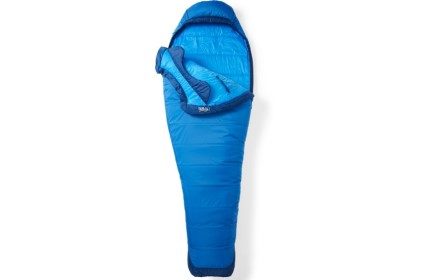
Best for most:
Marmot Trestles Elite Eco 20
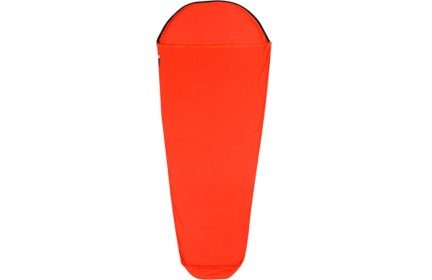
Added insulation:
Sea to Summit Liner
Marmot has been a trusted source for high-performance outdoor gear since the 1970s, so it was no surprise that after hours of product research, we settled on the Marmot Trestles Eco series for our top pick. The Marmot Trestles Eco 20 is a 3-season mummy-style sleeping bag that boasts a range of high-end features like anti-snag zippers, internal stash pockets, a jacket-style hood, hang loops, and a roomy but well-insulated foot box.
For insulation, Marmot used their HL-ElixR ECO synthetic fiber, which is a blend of a 100% recycled material that was built to provide high loft, maximum warmth, and a soft feel. Out of all the synthetic bags we looked at, the Marmot Trestles Elite Eco 20 Sleeping Bag was one of the lightest while still covering temps down into the 20s Fahrenheit. If you need to survive in near-zero temperatures, consider adding the Sea to Summit Thermolite Reactor Extreme Sleeping Bag Liner, which will add another 25 degrees Fahrenheit of insulation.
Sleeping bag liners are great for keeping your bag clean and extending the period in which your bag needs to be washed. Sleeping bag liners can also be used for additional insulation or even as a sleeping bag if it is warm. Sea to Summit makes several sleeping bag liners. Liners like the Sea to Summit Thermolite Reactor Extreme Sleeping Bag Liner offer no insulation, just trap body oil and dirt, while liners like the Sea to Summit Thermolite Reactor Extreme Sleeping Bag Liner add 25 degrees Fahrenheit of insulation to your sleeping bag. Liners offer a lot of flexibility to your preps.
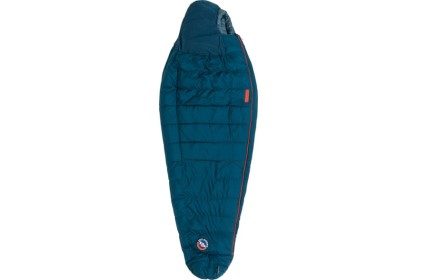
Great for side sleepers:
Big Agnes Sidewinder SL 20 Sleeping Bag - Men's
Similar in performance to the Marmot trestle series, but a little pricier due to the down/synthetic blend, the Big Agnes Sidewinder SL 20 (for a 20 degree rating) sleeping bag is an excellent sleeping bag geared toward down lovers and side-sleepers. To accommodate end-users who toss and turn during the night or those that prefer sleeping on their side, Big Agnes added additional insulation at the feet and hips. The Big Agnes Sidewinder SL 20 has a host of premium features like rip-stop nylon, water-resistant materials, jacket-style hood, slot for your pillow, and exterior loops for hanging and drying. Big Agnes used a lot of post-consumer recycled polyester for the synthetic portion of their insulation.
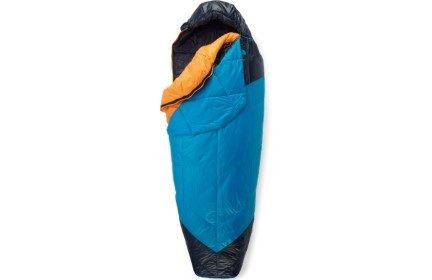
Versatile:
The North Face One Bag
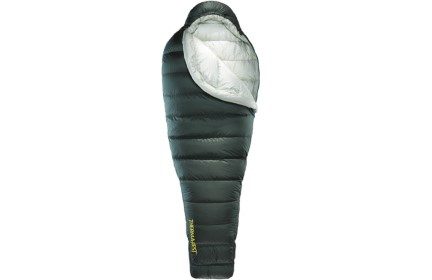
Lightweight:
Therm-a-Rest Hyperion 32
The North Face One Bag Sleeping Bag is one of the most innovative sleeping bags we came across in our research. The North Face One is unique because it has interchangeable layers where it can be configured for 5, 20, or 40 F temperatures. Made from synthetic and down material, this bag offers a lot of flexibility.
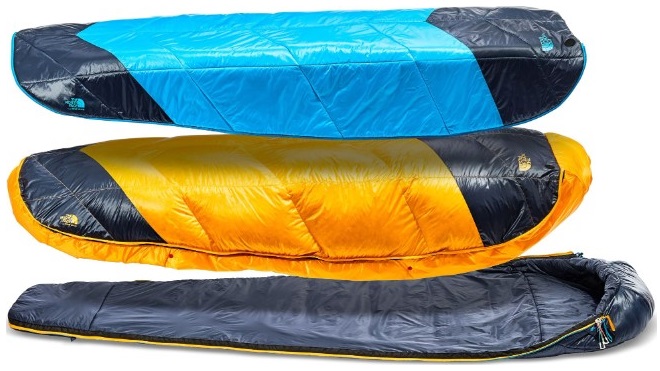
Coming in around 1 pound, the Therm-a-Rest Hyperion 32 Down Sleeping Bag is one of the lightest bags that meets the rest of the criteria. Made from 900-fill-power Nikwax Hydrophobic Down, this sleeping bag is comfort temperature rated to 32°F. If you are trying to shave ounces from your kit, this is a great bag.
Contenders
Although not currently top picks, these are worth a look if you want more options.
Sleeping bags:
- Big Agnes Cabin Creek 15 Double bag
- Big Agnes Torchlight Camp 20 mens and womens
- Marmot Trestles Elite Eco 0
- Morrison Outdoors Big Mo 20 infants and toddlers
- Mountain Hardwear Shasta 15 mens and womens
- NEMO Tempo 20 mens and womens
- REI Co-op Frostbreak 5 – Unisex
- REI Co-op Trailbreak 20 – Women’s
- REI Co-op Kindercone 25 – Kids
- Sea to Summit Trailhead ThII 30 – Unisex
- Sea to Summit Quest QuII – Women’s
- Snugpak Basecamp Ops TSB Sleeping Bag
- ust Monarch
Sleeping bag liners:
- Cocoon Microfiber Mummy
- Sea to Summit Thermolite Reactor
- Sea to Summit Thermolite Reactor Compact Plus
- Snugpak Silk Liner
Be prepared. Don’t be a victim.
Want more great content and giveaways? Sign up for The Prepared’s free newsletter and get the best prepping content straight to your inbox. 1-2 emails a month, 0% spam.
Types of sleeping bags: backpacking vs. camping vs. wearable vs. quilts
Sleeping bags can be broken down into two categories: backpacking sleeping bags and car camping sleeping bags. Both have their advantages and disadvantages and both will work in a survival situation. Sleeping bags come in a variety of shapes, weights, and sizes that make them optimal for a specific task.
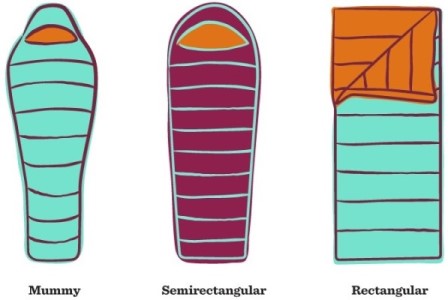
Backpacking
Backpacking sleeping bags tend to be lighter, more streamlined, less roomy, and compress down into a smaller package which can be carried in a backpack or a go-bag. Backpacking sleeping bags are typically a mummy or semi-rectangular shape that cuts down on weight and bulk and efficiently locks in body heat. Backpacking bags can be used for camping out of vehicles but might be on the snug side for some. Sleeping bags made for backpacking will weigh 1 to 5 pounds.
Backpacking sleeping bags can include two-person sleeping bags which are okay if you have a spouse or a child. If you don’t have a partner in your sleeping bag you will be cold, so fold the bag over or under your body to remove the excess space. Two-person sleeping bags like the Big Agnes Cabin Creek 15 Double Sleeping Bag, will weigh around 4 pounds.
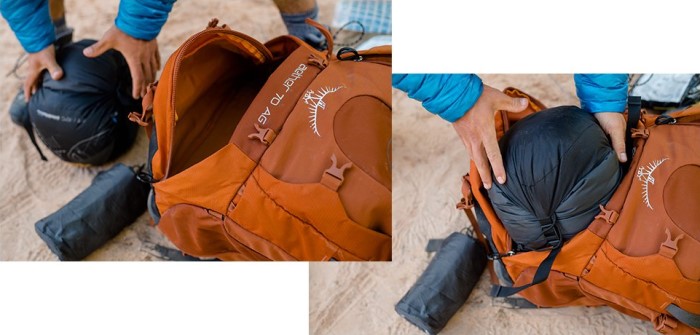
Tip: Try out the sleeping bag and make sure it will zip over your shoulders. Large-framed humans may have a hard time zipping up a sleeping bag.
Camping
Camping sleeping bags tend to be larger than their backpacking counterparts and have a lot more interior room and material. Commonly found in a more rectangular shape, some bags can be zipped together to create a two-person bag. Camping sleeping bags roll up and typically store in a large duffle-style bag.
Sleeping bags made for camping will weigh 3 to 8 pounds.
Tip: In cold weather, use paracord to tie up loose or excess material on your sleeping bag before crawling in. This will reduce the internal volume, which is less space that your body will need to heat up.
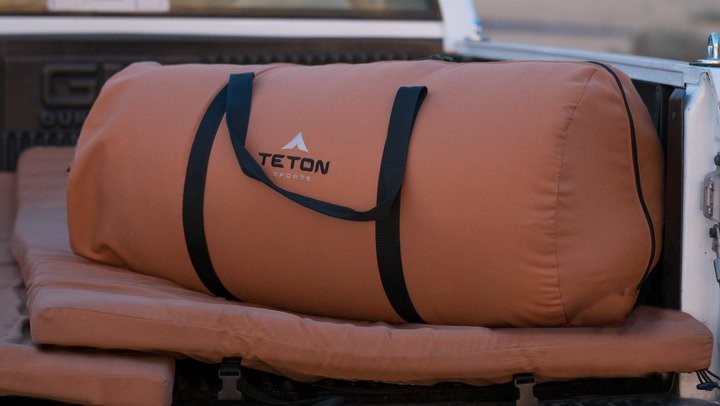
Wearable
Wearable sleeping bags are a recent addition to the sleeping bag market. This style of sleeping bag lets you open the bag to have free range of motion for your arms and legs. These bags allow you to don the bag for warmth and perform ancillary activities before settling in to sleep.
These bags are neat, but they don’t weigh less than typical backpacking sleeping bags, and the humanoid-shaped sleeping bags do not lend themselves to sleeping bag liners. If you carry a waterproof bivy as a shelter system, a wearable sleeping bag is not a bad option.
More: Best bivy sack
Quilts
A new addition to the sleeping bag industry, quilt sleeping bags, aka sleeping bag quilts, resemble hoodless sleeping bags. Like sleeping bags, quilts can use zippers, while others use cross straps with snaps. Some higher-end models have hoods that can be attached. Quilts will be lighter than their sleeping bag counterparts but are not optimal for extreme cold weather.
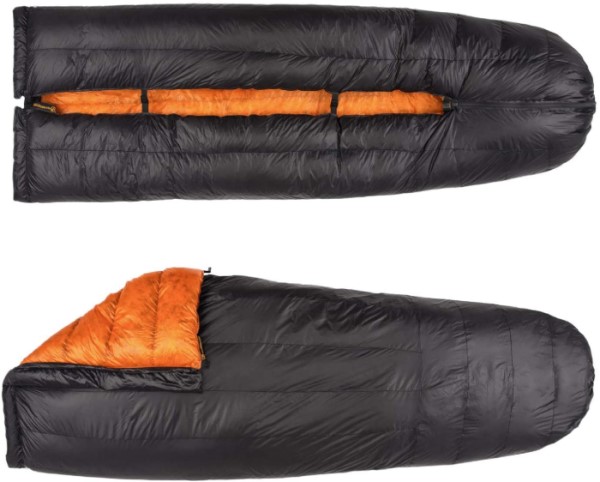
Since prepping involves planning for as much as possible, we recommend staying with a traditional sleeping bag, especially if you find yourself in dangerously cold weather. If you like bivy sacks, a quilt could be a good solution. If you like quilts, consider a sleeping bag liner and have a way to heat your head.
Sleeping bag liners
Sleeping bag liners are like bed sheets for your sleeping bag. They keep your sleeping bag free from body oils and dirt and will increase the life of your sleeping bag. Sleeping bag liners are easy to clean and can offer additional insulation for your sleeping bag. Sleeping bag liners can add between 5 to 25°F of extra warmth depending on the model, which can add flexibility when shopping for a sleeping bag. If you are in a warm climate and need minor insulation you can forego your sleeping bag, and just sleep in your sleeping bag liner.
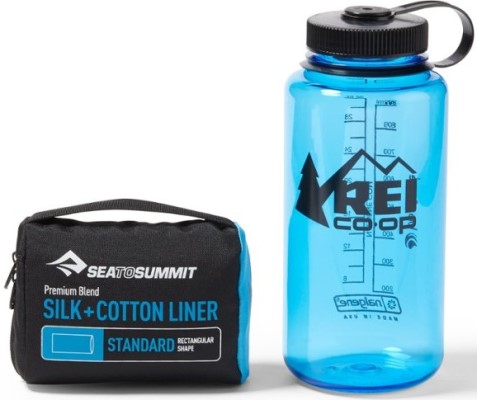
Liners are made from a host of materials, including cotton, silk, fleece, or synthetic or insulative material. Liners can range from $30 to $100 and typically weigh around 12 ounces.
Understanding temperature ratings
Before temperature ratings were standardized, consumers would look at fill-power and loft. Fill-power was an early metric created to grade down feathers. A better way to judge the insulation of a sleeping bag is to look at its temperature ratings.
Starting in 2005, the EN 13537 Standard (European standard) was introduced in Europe, which standardized sleeping bag temperature ratings. In 2017, the International Organization of Standardization (ISO) released ISO 23537-1:2016, which was an updated version of the old EN rating.
The new ISO standard created a testing protocol for all sleeping bags, which includes a heated mannequin tucked in a bag with a series of temperature sensors. For testing, the mannequin is placed in a cold chamber. With the mannequin giving off heat similar to a human body, the temperature in the chamber dropped to where the mannequin’s own “body” heat can not stay at critical temperatures necessary to keep a human being alive. We recommend only buying bags that have been tested to this EN/ISO standard. Children’s sleeping bags do not fall under EN/ISO testing standards but will have a temperature range.
- Comfort Range: The comfort range is the temperature where a “cold sleeper” will feel comfortable. According to the EN/ISO standard, this is also where the “average female” will feel comfortable.
- Transition/Lower Limit Range: This is the temperature range, where you may feel cold, but not shivering. This is a good temperature to look at if you want to incorporate a sleeping bag liner for additional insulation.
- Extreme/Risk Range: At this temperature, you are in danger of getting hypothermia even if you are in a sleeping bag.
Something to note, EN/ISO standards are recommendations. Many variables can affect your body temperatures like wind, ground insulation, your body’s metabolism, health, and your clothing; for example, are you getting into your sleeping bag while sweaty or damp?
Temperature ratings are for brand new bags. Expect your bag’s performance to degrade over time as the material compresses and breaks down.
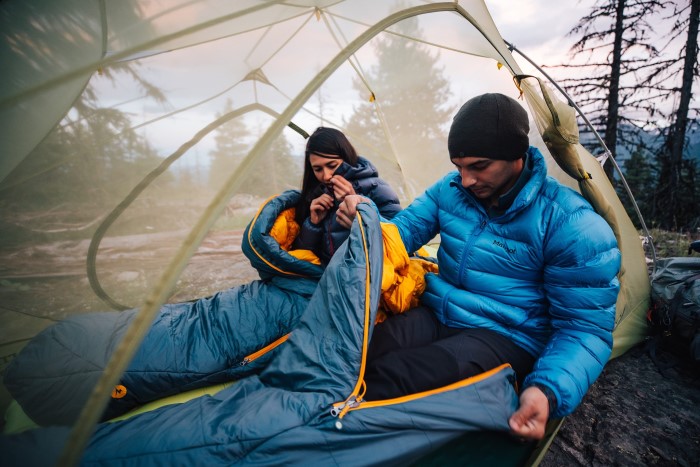
When it comes to temperature, sleeping bags fall into three temperature categories:
- Summer: Summer bags have a lower limit temperature rating of 30°F or higher. These bags are perfect for the summer months.
- 3-Season: 3-Season bags have a lower limit temperature rating between 15 to 30°F. If you expect colder temperatures, consider a sleeping bag liner.
- Winter: Winter sleeping bags have a lower limit temperature below 15°F.
Pick your rating based on the coldest nights in your area
If it’s not unusual for a winter night to get into the 10-20°F range, that’s your benchmark. You can ignore extreme outliers — if a ‘bad’ winter night in your area is 10°F, but every once in a while it gets to below-zero, you can ignore the outlier and go with what’s the “bad end of normal.”
The beauty of sleeping bags is that if you get too warm you just unzip the bag till you cool to your optimal temperature.
Down insulation
Down insulation is composed of feathers from either geese or ducks. Down feathers are the fine feathers that sit closest to a bird’s dermal layer and trap air, which helps the bird maintain its temperature. Female birds will pluck down feathers from their bodies to line their nests to insulate their eggs.
Humans have been collecting down for insulative layers for several millennia. When it comes to commercial down used in jackets and sleeping bags, it is gathered, plucked from live birds, or plucked from birds after being slaughtered for meat consumption. The majority of down comes from geese or ducks killed for food consumption. Live plucking has fallen out of favor due to animal cruelty concerns, though it is still practiced.
Premiums downs, like that from eider ducks, are raised in specialized farms free of natural predators. The ducks are bred and have eggs, which are naturally nurtured in eider feathers. After the ducks leave the nest, the feathers are gathered and used for insulation. Eider down is rare, and sleeping bags from this material cost around $800.
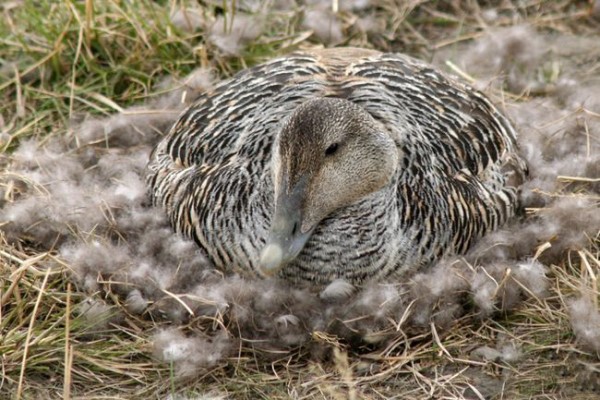
If you are worried about where your down is sourced, ethically sourced down will be labeled with a standard like RDS (Responsible Down Standard) or TDS (global Traceable Down Standard).
Down feathers are regulated by the Federal Trade Commission. Regulations that are important for you:
- Pure down feathers will be marked as “100% Down”
- “Down” is most likely a mixture of synthetic and natural down
- Products labeled “Goose Down” must contain at least 90% goose down
Fill power
Down fathers are measured by their fill power. Fill power is a measure of the fluffiness or loft of the feather. The higher the fill, the greater the insulating capability of the down.
Grading down is complex, but here’s the gist: The feathers are placed in a 288 mm graduated cylinder, and a 94.25-gram weight is placed on top. With temperature and humidity accounted for, the compression rate of the down is measured. Quality feathers with high fill power will compress more due to being lighter. Lower quality feathers will be denser and resist the weight, having a lower fill power.
When it comes to actual numbers, 600 to 800 fill power is good, while 800 and above is excellent. Poor quality down will have a fill power between 300 and 500. When it comes to real-world applications, you could have a sleeping bag with a fill power of 300 to 500 insulate just as well as something in the 600 to 800 fill range, but you will need more down feathers, which would make the bag weigh more.
Fill power used to be a good measure for selecting down products like jackets and sleeping bags, but when selecting modern sleeping bags, you are best going off the temperature ratings.
Hydrophobic (water-resistant) down coatings
A weakness of a down is that it can get wet and lose its ability to insulate. The moisture can also spur the growth of mold and mites. Chemically treated down like Nikwax Hydrophobic Down can make your down hydrophobic or water repellent. The industry seems split on these coatings, with some opting to create a more water-resistant shell vs. using a water-resistant coating on the feathers. Premium companies like NEMO and Therm-a-Rest offer bags with Nikwax Hydrophobic Down.
Pros and cons of down insulation
Pros:
- Down is slightly lighter than its synthetic counterparts
- Down has a slightly better fill power when compared to synthetic insulation, meaning you need less down material to achieve the same cold ratings
- Down can last 2-3 times longer than synthetic fibers because synthetic can break apart when rubbed together
- Down can clump together from dirt and body oil but can be “restored” with a simple wash
Cons:
- Because down is sourced from animals, it can be expensive
- Down clumps when it gets wet and loses its ability to insulate
- Down can get mold and dust mites, which can trigger allergic reactions
- Down can be difficult to dry in the field if you are working in a damp environment
- Material layers that encase down are not as breathable materials made from synthetics
Synthetic insulation
Synthetic insulation, or “synthetic down,” is made from materials that mimic the insulative nature of down. These synthetics are often a tad heavier and might even insulate better than their natural counterparts. Some companies like Columbia use TurboDown, which is a blend of natural and synthetic down.
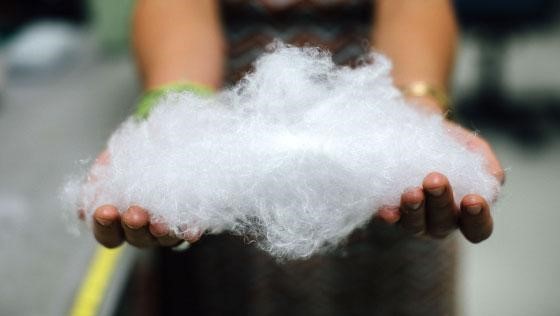
The majority of synthetic insulation is made from polyester. Unlike bird down, synthetic insulation allows companies to get creative with weaves and placement in the fabric. Synthetics can be designed to trap body heat, block cold air, and allow for moisture to wick away from the body.
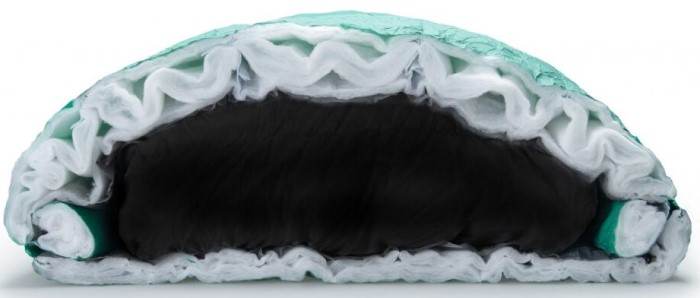
Synthetic insulation can incorporate recycled plastics. Because of the environmental benefits, products made from recycled plastics will be marked accordingly. You can also look for products that are “Bluesign approved.” The synthetic materials industry makes new advancements every year and is starting to incorporate non-polyester products like Aerogel.
Unlike natural down, there are no standard testing criteria for synthetic down, though companies will advertise a fill power analogous to down. These ratings tend to be accurate, though when it comes to buying products for your specific needs, just look at the EN/ISO temperature ratings.
Pros and cons of synthetic insulation
Pros:
- Still insulates when wet and will even outperform treated down
- Dries faster than down and can be used in conjunction with breathable fabrics
- Hypo-allergenic
- Less expensive than down
- Made in a lab, so there are no animal ethics involved
- Can be made from recycled plastics
Cons:
- May not last as long as natural down
- May be a tad heavier if you are trying to shave off ounces
- Unlike down loft, which can be restored by washing, synthetics cannot be restored
Ten years ago, we would have recommended staying with down insulation, but advances in material science have created a host of amazing synthetic products perfect for survival. As a testament to synthetics, every major sleeping bag manufacturer is making sleeping bags with synthetic insulation.
Other features to consider
Men’s vs women’s sizes: Bags made for men will have more room at the shoulder, while women’s models will be narrow at the shoulders and have more room in the hip region.
Sleeping pad sleeve: Some bags have very little insulation on the bottom of the bag and instead feature a sleeve for a sleeping pad.
Pillow pocket: Like a sleeping pad sleeve, a pillow pocket allows you to place a small inflatable pillow or even clothes under your head to create a pillow.
Anti-snag zippers: A major fail point on sleeping bags is the zipper area. Anti-snag zippers protect the fabric near your zipper. This is done via a guard along the zipper or with a zipper cover.
Tip: If you are in a survival situation and your zipper breaks, poke small holes along your zipper and tie your sleeping bag with paracord. This will lock in heat and keep you alive.
How do you store a sleeping bag? Does compression ruin the insulation?
Compression does harm your bag’s ability to insulate. That’s why normal-life advice is to store your bag unpacked over the unused offseason months, for example.
But we have to balance that problem vs. the problem of wanting your bag packed and ready to go at all times (one of the sane prepper rules.)
We recommend accepting the (relatively small) loss of insulation — it’s better to have a bag that’s 10% less effective than have no bag at all because it wasn’t ready in the chaotic moments you needed to grab it and go.
Camping-style sleeping bags are usually stored in a giant stuff sack in a semi-loose state (pictured above), but backpacking sleeping bags are often carried in the field in a compression bag.
Backpacking bags often come in a bag with built-in compression straps, like this:
Those are great for keeping things small inside your pack. But, if you can, try to leave the bag stored with the straps as loose as possible, only cinching them down when the time comes.
How to clean a sleeping bag
Bags collect the sweat, oil, and grime from your body. Liners help because they’re easy to remove and throw in the laundry. But the bag will eventually need cleaning.
In between major cleanings, whenever you get back home from using your bag:
- Turn it inside out
- Let dry 4 hours
- Flip it back to normal
- Let dry another 4 hours before finally storing
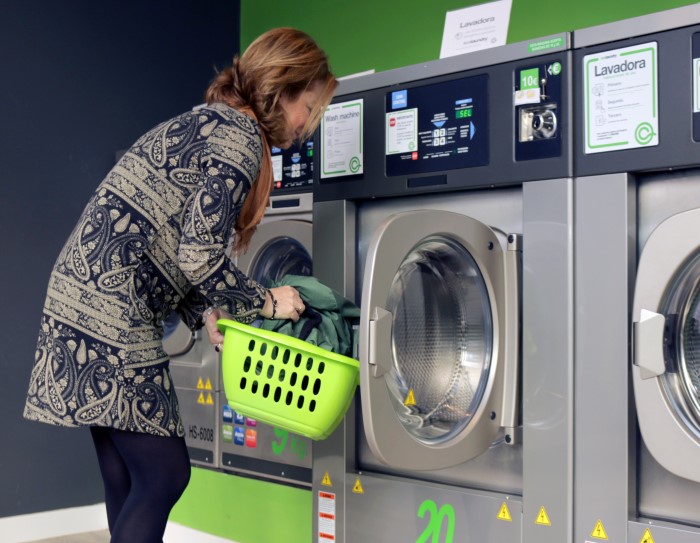
Follow the instructions on the wash tag. Some general tips:
- Fully unzip the bag before putting it in the laundry.
- Use front-loading machines. If you have to use a top-loading washer, use the gentle setting or put the bag inside its large mesh stuff sack before putting in the machine.
- For down sleeping bags use Nikwax Down Wash Direct.
- Use warm, gentle cycles.
- Do not dry clean.
- Use low heat in the dryer.
- Add tennis balls or similar to the dryer to help fluff the insulation back up.
